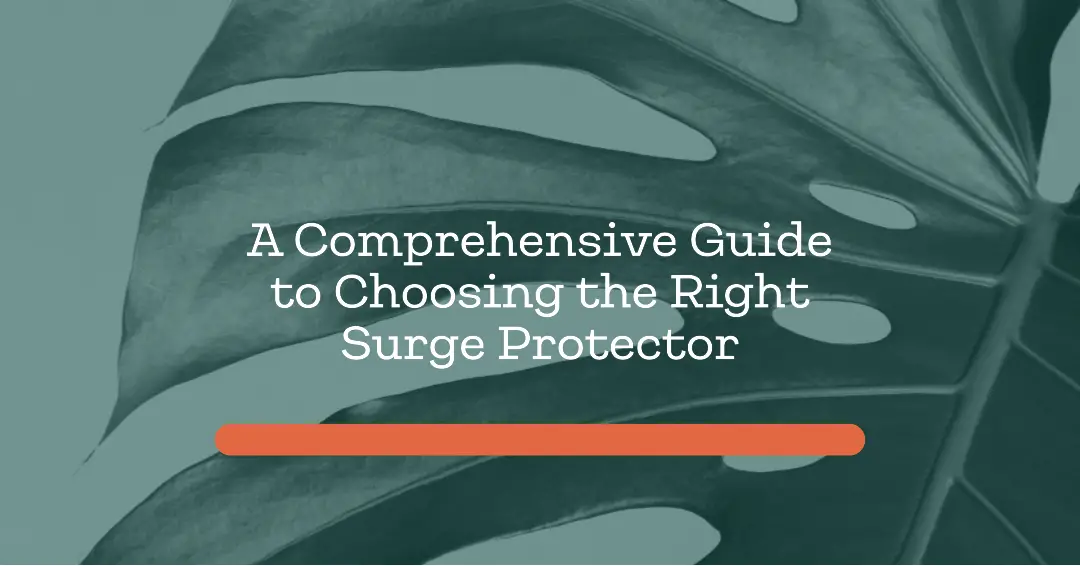
Happy Hippo Halloween Spider Web Decoration, Plastic Spiders, Party Supplies, Spider Webs (Small, 200 Sq Feet)
$9.99 (as of October 22, 2024 10:19 GMT +00:00 - More infoProduct prices and availability are accurate as of the date/time indicated and are subject to change. Any price and availability information displayed on [relevant Amazon Site(s), as applicable] at the time of purchase will apply to the purchase of this product.)Introduction
In today’s digital age, our lives are intertwined with technology, and the devices we rely on are more vulnerable than ever to unexpected power surges. A surge protector, also known as a power strip or surge suppressor, is a crucial component in safeguarding our valuable electronics from potential damage. This comprehensive guide delves into the world of surge protectors, exploring their importance, how they work, types available, and tips for choosing the right one for your needs.
Understanding Power Surges: The Threat to Your Electronics
Power surges are sudden spikes in voltage that can occur due to various factors such as lightning strikes, electrical faults, or switching of high-powered devices. These surges, even if brief, can wreak havoc on your electronic devices by overwhelming their circuits. Without protection, your devices could face irreversible damage.
What is a Surge Protector? Decoding its Role and Function
A surge protector acts as a barrier between your devices and the electrical supply. Its primary purpose is to detect excessive voltage levels and divert the excess energy away from your devices. By doing so, surge protectors shield your electronics from the destructive impact of power surges.
How Surge Protectors Work: Deflecting Voltage Spikes
Surge protectors utilize a combination of components, including metal oxide varistors (MOVs) and gas discharge arrestors, to redirect excess voltage to the ground. When a surge occurs, these components absorb the energy, preventing it from reaching your devices.
Different Types of Surge Protectors: From Basic to Advanced
Surge protectors come in various forms, catering to different needs. Basic power strips with surge protection offer multiple outlets, while more advanced models provide additional features like USB charging ports, phone line protection, and even Wi-Fi connectivity.
Wattage, Joules, and Clamping Voltage: Deciphering Technical Specifications
Understanding surge protector specifications is crucial for selecting the right one. Wattage determines the amount of power a surge protector can handle. Joules indicate the energy absorption capacity, while clamping voltage signifies the threshold at which the protector activates.
Choosing the Right Surge Protector for Your Devices
When selecting a surge protector, consider the devices you’ll be connecting, the location of use, and the number of outlets required. Choose a model with sufficient outlets and joule rating to ensure comprehensive protection.
Installation and Proper Use: Maximizing Surge Protection
Proper installation involves connecting your devices to the surge protector and then plugging the protector into a grounded outlet. Avoid daisy-chaining surge protectors and using them in wet environments. Regularly inspect the protector for any signs of wear.
Home and Office Applications: Where Surge Protectors Shine
Both homes and offices benefit from surge protectors. Safeguarding computers, TVs, audio systems, and other electronics ensures uninterrupted operation and prolonged device lifespan. In office setups, surge protectors prevent data loss and equipment damage.
Travel-Friendly Surge Protection: On-the-Go Safeguarding
For travelers, compact surge protectors are essential companions. They provide surge protection for your devices even when you’re on the road, ensuring that your electronics stay safe in unfamiliar environments.
The Lifespan of Surge Protectors: When to Replace Them
Surge protectors have a finite lifespan, as their components degrade over time due to repeated exposure to power surges. It’s recommended to replace them every two to three years, depending on their usage and the severity of surges.
Myths and Facts About Surge Protectors Debunked
There are several misconceptions surrounding surge protectors. Contrary to popular belief, surge protectors do not consume energy when devices are turned off. Additionally, not all power strips offer surge protection. It’s important to debunk these myths to make informed decisions.
Protecting More than Electronics: Safeguarding Data
Beyond preventing physical damage to devices, surge protectors also play a role in data protection. A power surge can corrupt files and disrupt data flow, potentially leading to data loss. By using surge protectors, you minimize the risk of data-related complications.
Budget-Friendly vs. Premium Surge Protectors: Weighing the Options
Budget-friendly surge protectors provide basic protection and are suitable for simple setups. Premium models offer advanced features and higher joule ratings, making them ideal for valuable equipment and critical applications.
Surge Protectors for Specialty Devices: Computers, Home Theaters, and More
Specialty surge protectors cater to specific devices like computers, home theater systems, and gaming consoles. These models often provide additional outlets and features tailored to the unique needs of these devices.
Environmental Impact and Energy Efficiency Considerations
Opting for energy-efficient surge protectors can have a positive impact on both your utility bills and the environment. Look for models with power-saving features and ECO modes that automatically cut off power to inactive devices.
DIY Troubleshooting: Addressing Common Surge Protector Issues
In some cases, surge protectors may exhibit issues like power loss or damaged outlets. Basic troubleshooting, such as resetting the protector or replacing a blown fuse, can resolve these problems. However, for major issues, it’s recommended to consult a professional.
Conclusion: Empowering Your Electronics with Surge Protection
In a world reliant on electronic devices, surge protectors play a crucial role in maintaining the integrity of your investments. By understanding the nuances of surge protection, selecting the right model, and using it correctly, you can ensure your devices are shielded from the unpredictable nature of power surges.
FAQs
Q1: Can I use a surge protector with extension cords? A: It’s best to avoid daisy-chaining surge protectors with extension cords, as it can compromise their effectiveness and pose safety risks.
Q2: Will a surge protector completely eliminate the risk of device damage? A: While surge protectors significantly reduce the risk of damage, they may not provide 100% protection. Extremely powerful surges could still cause harm.
Q3: Can I plug a surge protector into an ungrounded outlet? A: It’s not recommended. Proper grounding is essential for the surge protector to function effectively.
Q4: Can I use a surge protector with a power strip? A: Yes, as long as the power strip also offers surge protection. However, be cautious about overloading the circuit.
Q5: Can I plug a surge protector into another surge protector? A: This practice, known as “daisy-chaining,” is not recommended. It can increase the risk of power surges bypassing the protectors and damaging devices.











